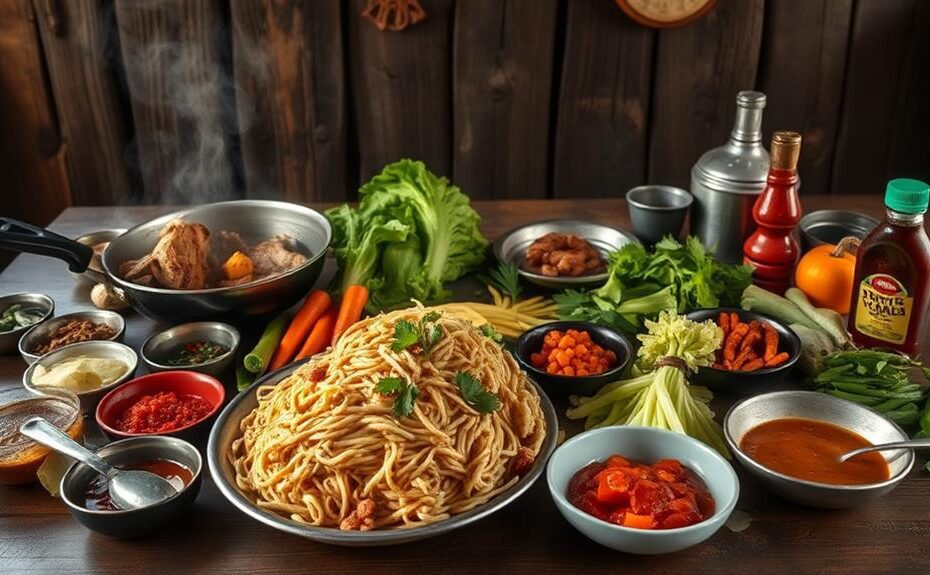Selecting the Right Noodles
Choose from traditional rice vermicelli or heartier options like udon or egg noodles as the base of your pancit dish.
Protein Options
Pair your noodles with a protein of your choice, such as marinated chicken, sautéed pork, succulent shrimp, or savory beef.
Adding Colorful Vegetables
Incorporate colorful veggies like cabbage, carrots, and bell peppers to add texture and flavor.
Aromatics and Flavor Enhancers
Saute garlic and onions to add depth to your dish, and use soy sauce, oyster sauce, and a squeeze of citrus to bring all the flavors together.
Customizing Your Recipe
Now that you have the basics down, fine-tune your recipe to make it your own by adjusting the ingredients and seasonings to your taste.
Understanding Pancit Essentials
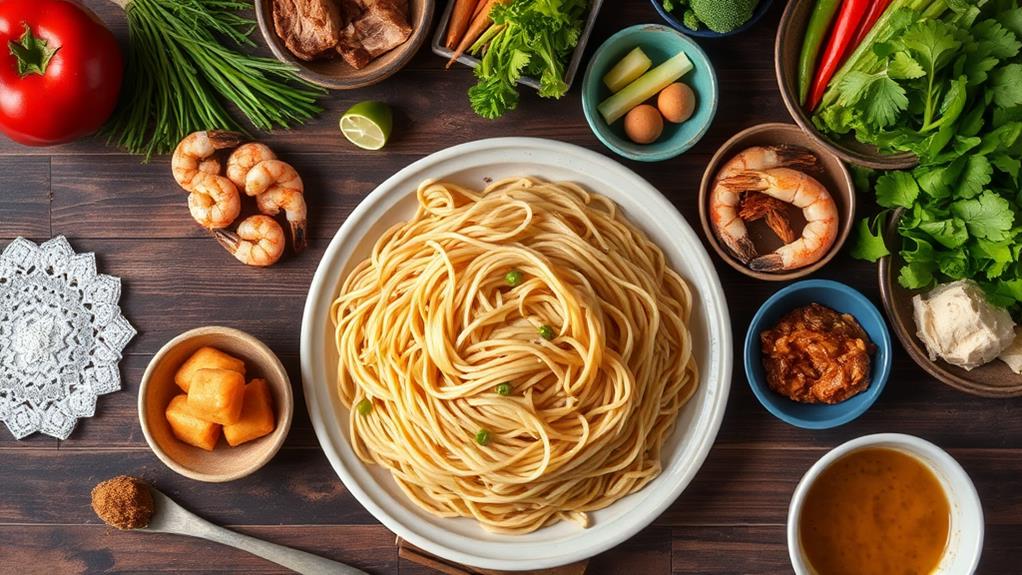
Choosing the Right Noodles
The foundation of a great pancit dish starts with the noodles. Traditional rice vermicelli (bihon) is the preferred choice, but egg noodles can be used for a chewier texture.
Selecting the Right Vegetables
Uniformly cut vegetables are essential for even cooking. Common choices include shredded cabbage, sliced carrots, onions, and green beans.
Adding Protein and Flavor
Proteins like chicken, pork, or shrimp add flavor and substance to pancit. For a vegetarian option, tofu can be used.
Essential Seasonings
Soy sauce is a must, and using low sodium soy sauce helps control saltiness.
Garlic and onions add extra flavor, while oyster sauce or a pork bouillon cube can elevate the broth to the next level.
Choosing the Right Noodles
Choosing the Right Noodles for Pancit
Traditional Noodles
The traditional noodle for Pancit is rice vermicelli, known as bihon, which offers a delicate texture and absorbs flavors well without the need for boiling.
Alternative Noodles
If you prefer a chewier texture, Pancit Canton's egg noodles are a great alternative, holding up well to heavier sauces and ingredients.
For a heartier dish, Udon noodles can be used, but be aware that their thicker texture may alter the traditional flavor profile.
Gluten-Free Options
For gluten-free options, rice noodles are the way to go, maintaining the authentic taste and texture of Pancit without containing wheat.
Preparing Noodles
Whatever noodle you choose, make sure to soak them according to package instructions. This prevents them from becoming mushy during cooking and ensures even absorption of flavors.
Selecting Flavorful Proteins
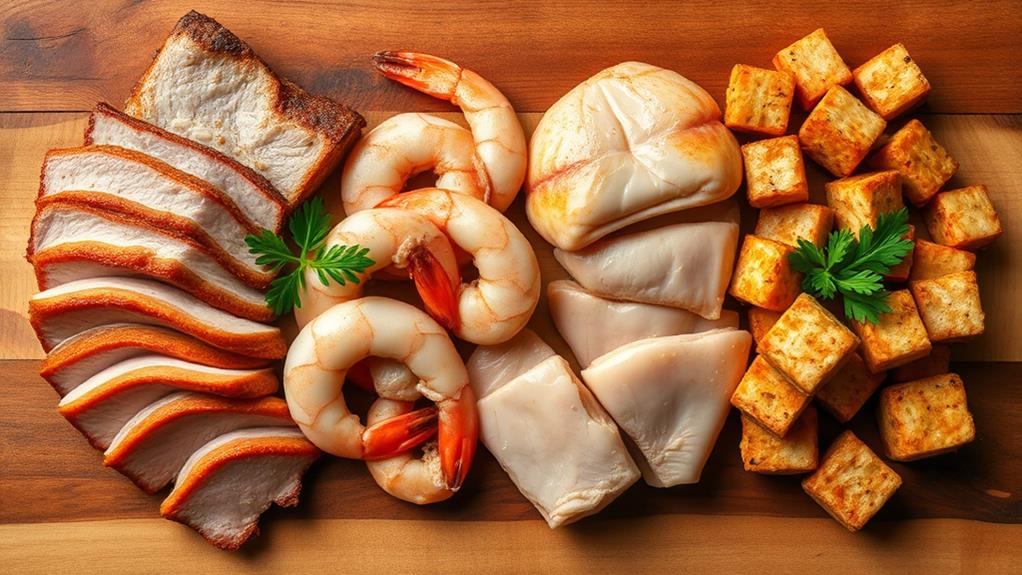
Selecting Proteins for Pancit
When choosing proteins for your Pancit dish, consider the unique flavor profiles each option provides. You can select one or combine two or more proteins for added complexity.
Protein Options and Preparation Methods
| Protein | Preparation Method |
|---|---|
| Chicken | Marinated in soy sauce and garlic, then sautéed |
| Pork | Sliced into bite-sized pieces and sautéed until browned |
| Shrimp | Pre-cooked and added towards the end of the cooking process |
| Beef | Sautéed with garlic and onions for added flavor |
Cooking Proteins to Perfection
Regardless of your protein choice, cook it to perfection to bring out its natural flavors. Proper cooking ensures a savory and complex Pancit dish that will satisfy your taste buds.
Picking Perfect Vegetables
Picking the perfect mix of vegetables is crucial to elevate your Pancit dish. The right vegetables can add a burst of flavor, texture, and color to your noodle dish.
When selecting vegetables, aim for a variety of textures and colors to create a visually appealing plate. This can be achieved by choosing vegetables that provide a mix of crunch, crispness, and softness. For example, sliced carrots offer crunch, shredded cabbage provides crispness, and diced bell peppers add softness.
Fresh and seasonal vegetables ensure maximum flavor and nutrition. Opt for fresh and seasonal options like snow peas, green beans, zucchini, and bok choy. These vegetables will provide the best taste and nutritional value.
Aromatics form the flavor base of your dish. Don't forget to add aromatics like minced garlic and diced onions, which infuse the noodles and meats with rich taste.
Uniform cutting and cooking are essential. Cut your vegetables uniformly for even cooking, and avoid overcooking, as this can lead to a loss of nutrients and texture.
Flavor Enhancers and Seasonings
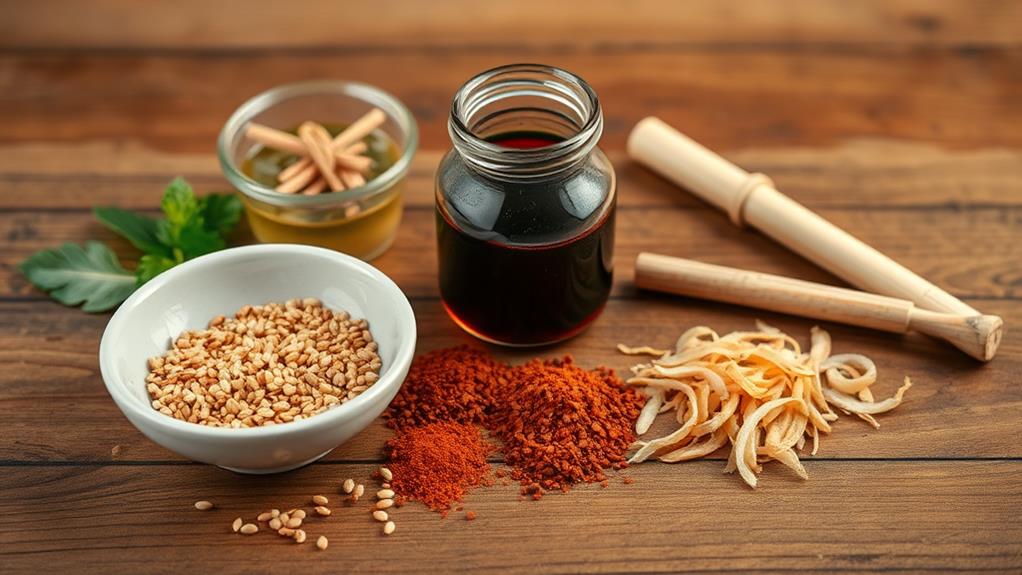
Flavor enhancers and seasonings are crucial in elevating the taste experience of your Pancit dish. They can significantly enhance the flavor complexity of your dish when used strategically.
Umami flavor is enhanced by oyster sauce, making the dish richer and more savory.
Low sodium soy sauce is a better option for those monitoring their sodium intake, as it provides depth of flavor while controlling saltiness.
Freshly cracked black pepper and a squeeze of lime or calamansi juice added just before serving can brighten the overall taste profile.
Fish sauce deepens the flavor complexity, adding a subtle salty essence that complements the other ingredients.
A hint of sweetness can be achieved by adding a small amount of sugar or honey, which balances the savory components.
Thoughtful selection and combination of flavor enhancers and seasonings create a Pancit dish with a harmonious balance of flavors.
Cooking Techniques and Tips
Crafting an exceptional Pancit dish relies on mastering five foundational cooking techniques.
Soaking rice noodles is crucial. To ensure tender noodles that absorb flavors effectively, soak them in warm water for 8-10 minutes before cooking.
Sautéing vegetables to perfection is key. To achieve this, cut vegetables uniformly to ensure even cooking and a consistent texture throughout the dish.
Add proteins like chicken early in the cooking process to allow them to fully cook and meld with the flavors of the garlic and onion. Use a combination of low sodium soy sauce and oyster sauce for a balanced flavor profile that enhances the dish without overpowering the other ingredients.
Seasoning is critical. Adjust seasoning towards the end of the cooking process, tasting as you go, to achieve the desired depth of flavor without over-salting the dish.
Serving Suggestions and Variations
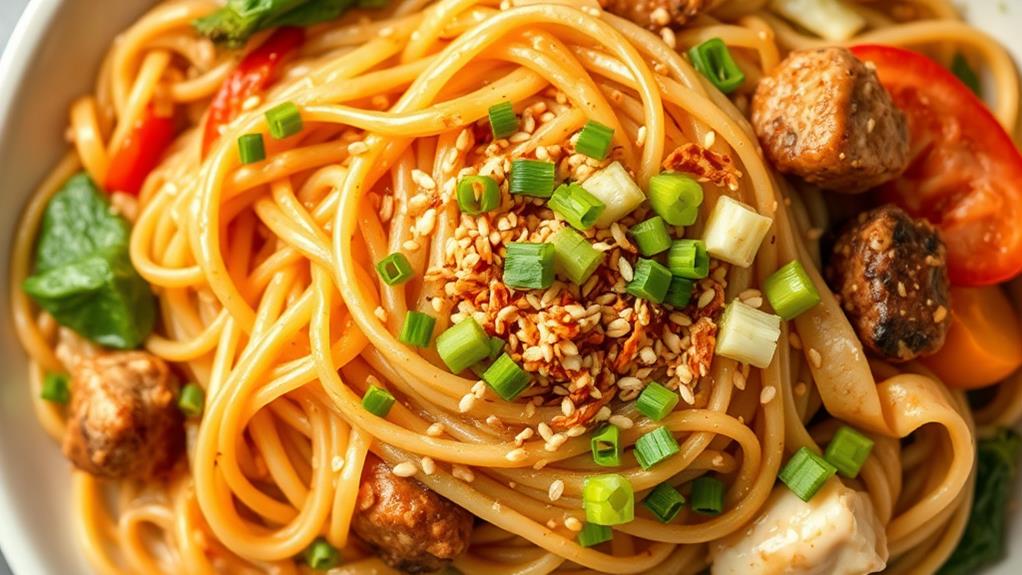
Serving Suggestions
To showcase the flavors and textures of Pancit, pair it with traditional Filipino lumpia (spring rolls) for a well-rounded meal that highlights the flavors of Filipino cuisine. Add a squeeze of lime or calamansi to enhance the dish's flavor and add a fresh, tangy element.
Customizing Pancit
To cater to different tastes and dietary preferences, incorporate various proteins such as shrimp, chicken, or pork into your Pancit. You can also experiment with different types of noodles, like bihon (rice vermicelli) or pancit canton (egg noodles), to create unique versions of Pancit that vary in texture and flavor.
Pancit Variations
| Variation | Description |
|---|---|
| Classic Pancit | Pair with lumpia and serve with a squeeze of lime |
| Protein-packed | Add shrimp, chicken, or pork for added protein |
| Veggie Delight | Mix in sautéed broccoli or bell peppers for added nutrition and flavor |
| Noodle Twist | Experiment with bihon or pancit canton for a unique texture and flavor |
What are the essential ingredients for a Perfect Pancit Dish?
A perfect pancit dish requires a mix of popular types of pancit ingredients, such as rice noodles, vegetables like carrots and cabbage, and protein like chicken or pork. The key to a flavorful pancit is the right balance of savory sauces, like soy sauce and fish sauce, and a dash of citrus for brightness.
Nutrition and Cultural Significance
Pancit's Cultural Significance
In Filipino culture, Pancit is a staple dish often served at significant life events like birthdays and weddings, symbolizing long life and prosperity.
Nutritional Value
A typical serving of Pancit provides balanced nutrition, containing around 605 calories with a mix of carbohydrates, protein, and fat, making it a hearty meal option.
Cultural Connection through Ingredients
The use of ingredients like soy sauce, garlic, and fresh vegetables in Pancit not only enhances the flavor but also contributes to the dish's nutritional value, providing essential vitamins and minerals.
Family Traditions and Recipes
Pancit recipes vary widely among families and regions, showcasing the cultural significance of food as a means of connection and tradition within Filipino communities.
This variation highlights the importance of family traditions and cultural heritage in shaping the dish.
Celebrating Cultural Heritage
As you enjoy Pancit, remember that you're not just savoring a meal, but also celebrating the rich cultural heritage of Filipino cuisine.
Frequently Asked Questions
What Is the Filipino Dish Pancit Made Of?
Pancit is a Filipino dish primarily made up of noodles. These noodles can be varieties like bihon or pancit canton, which serve as the base of the dish.
Traditional ingredients such as vegetables, proteins, and aromatics like garlic and onion are added to create a flavorful and textured dish.
What Goes Well With Pancit?
Pancit pairs well with a variety of sides and main courses to create a well-rounded meal.
Serving pancit with crispy lumpia or egg rolls adds a satisfying crunch to the dish.
Sautéed broccoli provides a burst of color and added nutrition.
For a protein-packed option, consider pairing pancit with grilled or roasted meats like chicken or pork.
To balance the flavors, offer calamansi or lime wedges on the side, providing a zesty contrast to the savory noodles.
What Is the Most Popular Type of Pancit?
Pancit Bihon is the most popular type of pancit.
This beloved dish features thin rice vermicelli noodles that are a staple at Filipino celebrations and family gatherings.
Pancit Bihon has a rich history, with regional variations showcasing different noodle types, cooking techniques, and cultural significance.
What Is Pancit Guisado Made Of?
Pancit Guisado is a traditional Filipino dish made with bihon, a type of rice vermicelli noodle. This noodle is the foundation of the dish and is typically mixed with various proteins and vegetables.
The proteins commonly used are shrimp, chicken, or pork, which add flavor and texture to the dish.
Colorful vegetables like carrots, cabbage, and bell peppers are also added, providing a pop of color and freshness to the dish.
The ingredients are sautéed in oil, allowing the noodles to absorb the flavors and the vegetables to stay tender yet crisp.
